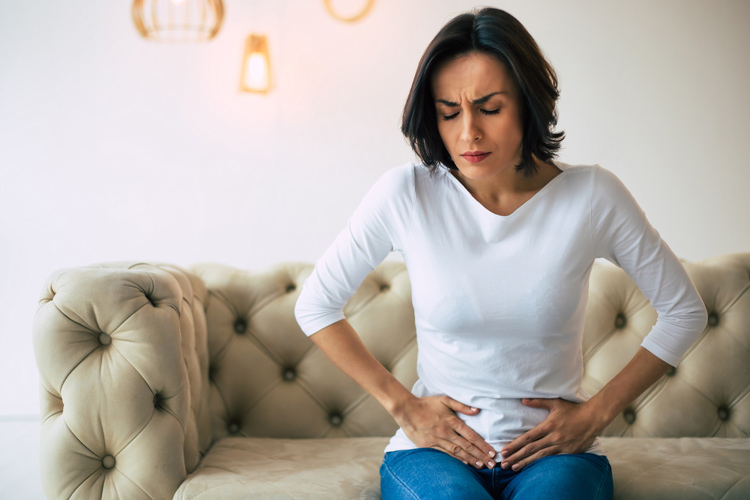Endometriosis is a chronic and often painful disorder that affects millions of women and teenage girls across the globe. In this condition, tissue similar to the lining of the uterus (called endometrium) grows outside the uterus in places it doesn’t belong—such as the ovaries, fallopian tubes, and pelvic tissues. This abnormal tissue growth responds to hormonal changes in the menstrual cycle, often resulting in inflammation, pain, and scarring.
Although there is no known cure, early detection, personalized care, and modern treatment options make it possible for women to manage the disease effectively—and even achieve a healthy pregnancy. OB-GYN specialists like Dr. Mark-Anthony Umobi emphasize the importance of tracking symptoms, seeking early medical intervention, and understanding all available treatment options.

What is Endometriosis?
Endometriosis occurs when endometrial-like tissue is found outside the uterus. Each month, this tissue behaves as it would inside the uterus—it thickens, breaks down, and bleeds. But unlike the lining of the uterus, this displaced tissue has no way to exit the body, leading to inflammation, severe menstrual pain, and the development of scar tissue (adhesions).
Common Areas Affected:
-
Ovaries
-
Fallopian tubes
-
Outer surface of the uterus
-
Pelvic lining
-
In rare cases, the bladder or intestines
Early Signs and Symptoms of Endometriosis
Recognizing the symptoms of endometriosis early can significantly improve quality of life. Dr. Umobi advises that women and teens experiencing the following symptoms should consult a gynecologist promptly:
Menstrual Irregularities and Pain
-
Severe cramping: Often the most noticeable sign; the pain may worsen over time.
-
Heavy or abnormal bleeding: Periods may last longer than usual or occur more frequently.
-
Pelvic pain before and during menstruation: Pain may radiate to the lower back or legs.
Pain During Bodily Functions
-
Painful bowel movements or urination: Especially during menstruation.
-
Pain during or after intercourse: A common but often underreported symptom.
Other Associated Symptoms
-
Chronic fatigue
-
Nausea or gastrointestinal issues
-
Infertility (in many undiagnosed cases)
Diagnosing Endometriosis: What to Expect
Proper diagnosis is crucial for effective treatment. Dr. Umobi outlines a step-by-step diagnostic approach:
Initial Assessments
-
Symptom Tracking: Patients are encouraged to log their symptoms—intensity, timing, and duration.
-
Pelvic Examination: A physical exam may detect abnormalities like cysts or scars.
-
Ultrasound or MRI: These imaging tools help identify endometriomas (ovarian cysts).
Laparoscopy – The Gold Standard
When imaging is inconclusive, a laparoscopy may be performed. This minimally invasive surgical procedure allows doctors to view the pelvic organs directly and confirm the presence of endometriosis.
“Laparoscopy not only confirms diagnosis—it often serves as the first line of surgical treatment,” explains Dr. Umobi.
Managing and Treating Endometriosis
Treatment is highly individualized and depends on the severity of the condition and the patient’s reproductive goals. Options range from medication to surgery.
Medical Management
-
Pain Relievers: NSAIDs like ibuprofen can reduce menstrual cramps.
-
Hormonal Therapy: Birth control pills, hormone patches, or vaginal rings help reduce or eliminate menstruation, thereby slowing endometrial growth.
Surgical Treatment
For women with severe symptoms or infertility, laparoscopic surgery is often recommended to remove endometrial growths and scar tissue. This can improve fertility and provide long-term pain relief.
“Surgery is especially beneficial for women trying to conceive, as it can increase the chances of a successful pregnancy,” says Dr. Umobi.
Living a Healthy Life with Endometriosis
Although endometriosis can be a lifelong condition, many women live well with it through proactive healthcare and lifestyle changes.
Tips for Daily Management
-
Maintain a healthy diet rich in anti-inflammatory foods
-
Exercise regularly to reduce stress and boost mood
-
Practice mindfulness and relaxation techniques
-
Keep up with regular OB-GYN visits
-
Join support groups for emotional encouragement
Impact on Fertility and Pregnancy
One of the most distressing aspects of endometriosis is its potential effect on fertility. However, many women with endometriosis do become pregnant—naturally or with medical help.
Fertility Treatments May Include:
-
Ovulation induction
-
Intrauterine insemination (IUI)
-
In vitro fertilization (IVF)
With surgical treatment and appropriate fertility support, a healthy pregnancy is absolutely possible.
When to See a Doctor
If you suspect you have endometriosis or have been experiencing pelvic pain that interferes with your daily life, don’t wait. Early diagnosis is key to effective treatment.
Seek medical attention if you experience:
-
Chronic pelvic pain
-
Difficulty conceiving
-
Painful periods or intercourse
-
Bowel or urinary discomfort linked to your cycle
Frequently Asked Questions:
Q1: Can endometriosis be cured permanently?
A: No, there is currently no cure for endometriosis, but with proper management—including medication, hormone therapy, or surgery—symptoms can be significantly reduced.
Q2: Is endometriosis a form of cancer?
A: No, endometriosis is not cancer. However, it is a serious and chronic condition that requires medical attention.
Q3: Can I still get pregnant if I have endometriosis?
A: Yes. While endometriosis can impact fertility, many women with the condition have healthy pregnancies, especially with proper treatment.
Q4: How is endometriosis diagnosed?
A: Diagnosis often involves a physical exam, imaging tests (ultrasound or MRI), and confirmation via laparoscopy.
Q5: What foods help reduce endometriosis symptoms?
A: Anti-inflammatory foods like leafy greens, berries, fatty fish, and whole grains may help ease symptoms.




